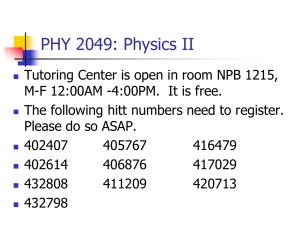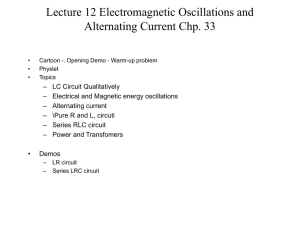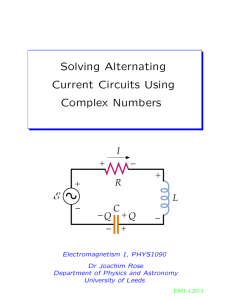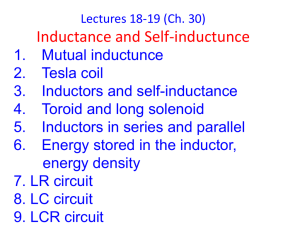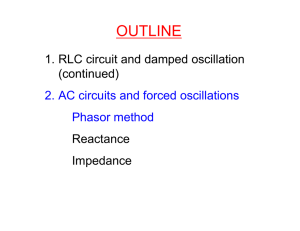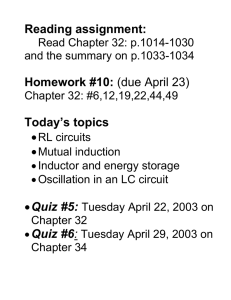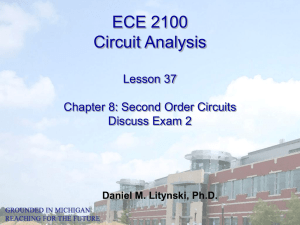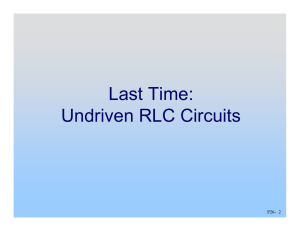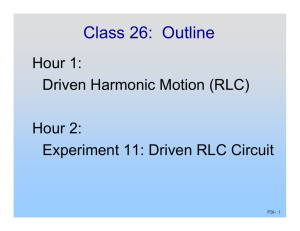Complex impedence instead of diff eq!
advertisement
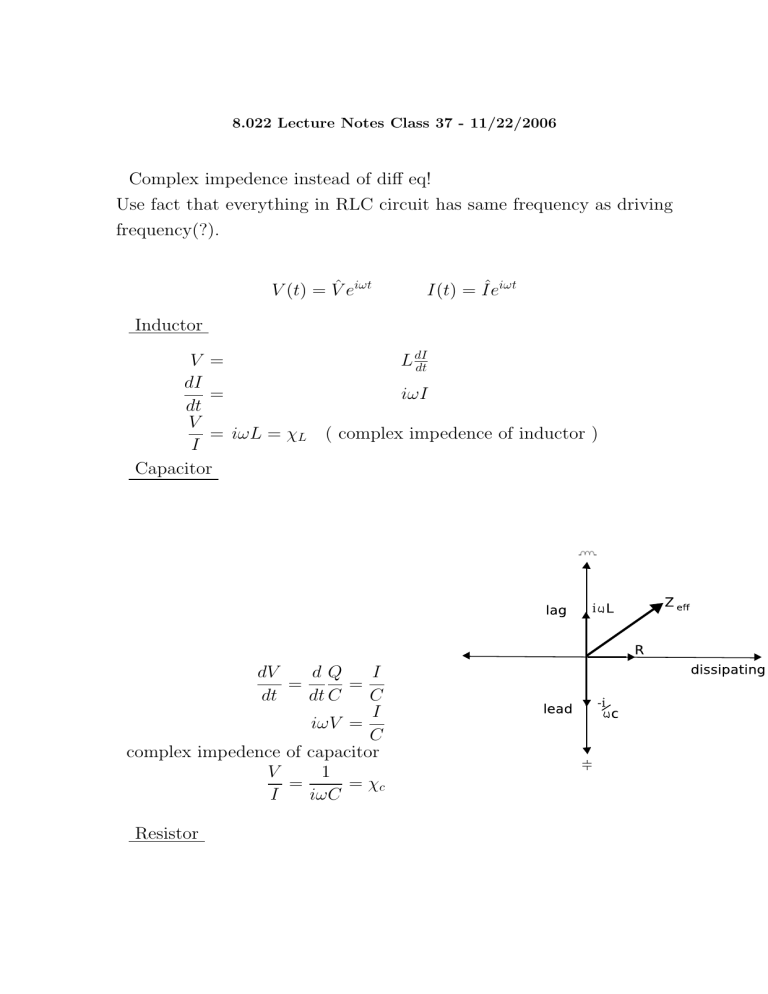
8.022 Lecture Notes Class 37 - 11/22/2006 Complex impedence instead of diff eq! Use fact that everything in RLC circuit has same frequency as driving frequency(?). V (t) = V̂ eiωt ˆ iωt I(t) = Ie Inductor V = dI = dt V = iωL = χL I Capacitor L dI dt iωI ( complex impedence of inductor ) dV dQ I = = dt dt C C I iωV = C complex impedence of capacitor V 1 = = χc I iωC Resistor 2 V =R I V =I ·z χL = iωL χC = 1 iωC χR = R RLC Circuit No derivatives any more! Can sum just like resistors in series. χtotal = χR + χC + χL = R + iωL + I= = = V χtotal 1 R−i(ωL− ωC ) V · 1 1 R+i(ωL− ωC ) R−i(ωL− ωC ) 1 V (R−i[ωL− ωC ]) 1 R2 +(ωL− ωC )2 1 iωC 3 Iˆ = V 1 2 1/2 [R2 +(ωL− ωC ) ] tan φ = 1 ωL− ωC R Parallel RLC Circuit Let Y = 1 χ , I =V ·Y admittance current YL = 1 iωL YC = iωC YR = I =V( 1 R 1 1 + i(ωC − )) R ωL Iˆ = V ( R12 + (ωC + tan φ = RωC − Large ω : L1 , V ωC is important. V Small ω : no C , ωL important. Can we do equivalent of Thevenin’s? 1 2 1/2 ωL ) ) R ωL 4 V = χef f ective I zef f = Ref f + iχef f First term decays, second term oscillates. Power Dissipation R does this! (LC circuit just oscillates, even w/o driver no loss of power). dV = RI 2 dt (= V I) 5 z = R = iχ z= iχ V = Vˆ eiωt 1 T < P >avg = = iχI ˆ iωt+ π2 = χIe �T 0 �T V · Idt �T Iˆ2 R cos2 (ωt)dt − T1 0 χIˆ2 · cos ωt sin ωtdt 0 Iˆ2 R 2 = Ladder Impedence z = z1 + z2 z z2 + z Solve: z1 z= + z � z12 + z1 z2 4 6 Let: z1 = iωL z2 = 1 iωC • iωL z= + 2 � −ω 2 L2 L + 4 C • v<0 for ω2 > • for ω 2 < 4 LC ω 2 L2 L > 4 C 4 LC , there’s a real part = resistance! But from only L = C? It’s because its infinite! Energy keeps traveling out for certain ω ! Critical Frequency - if you are under, energy will just keep going oout. Otherwise, will go out and come back.

